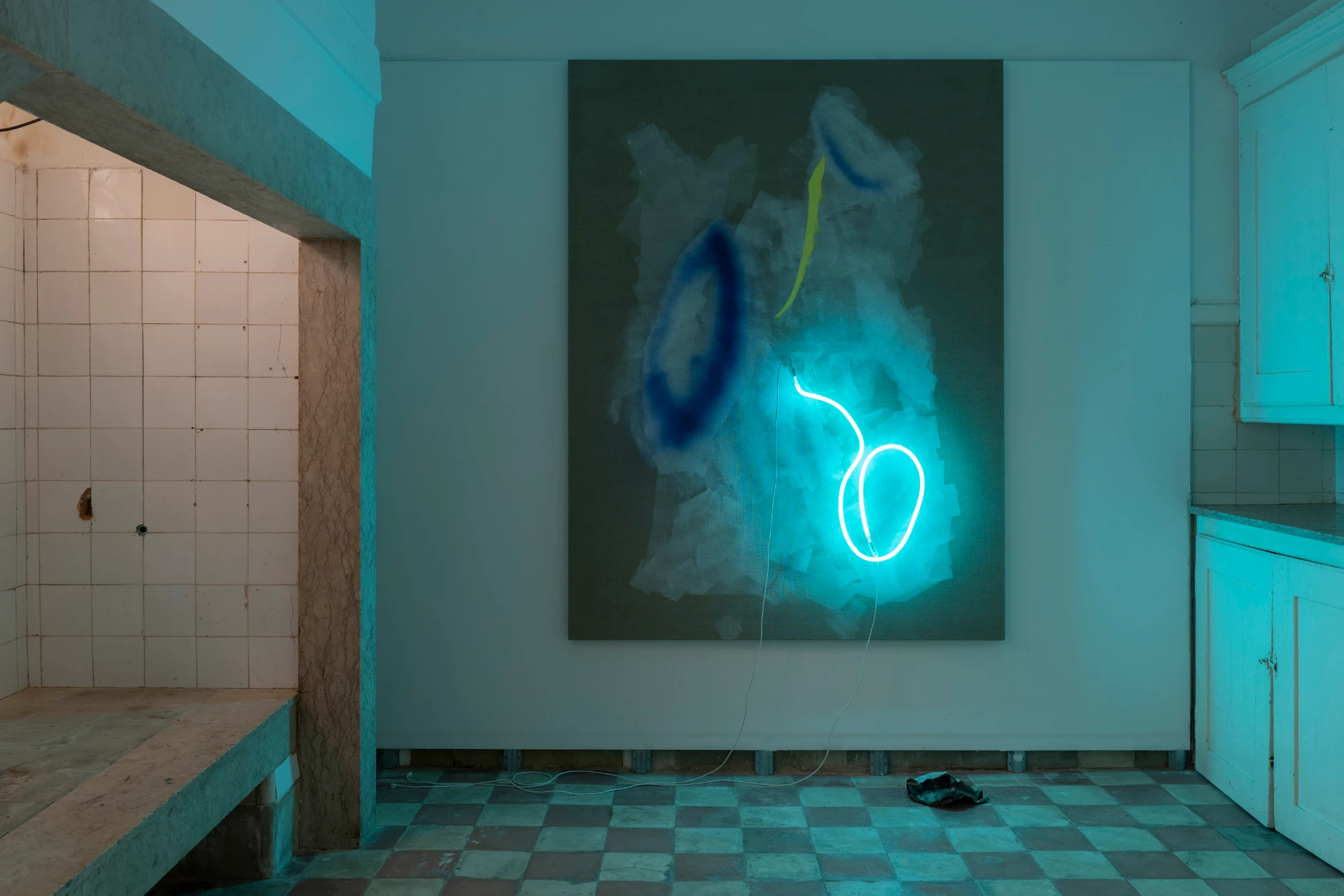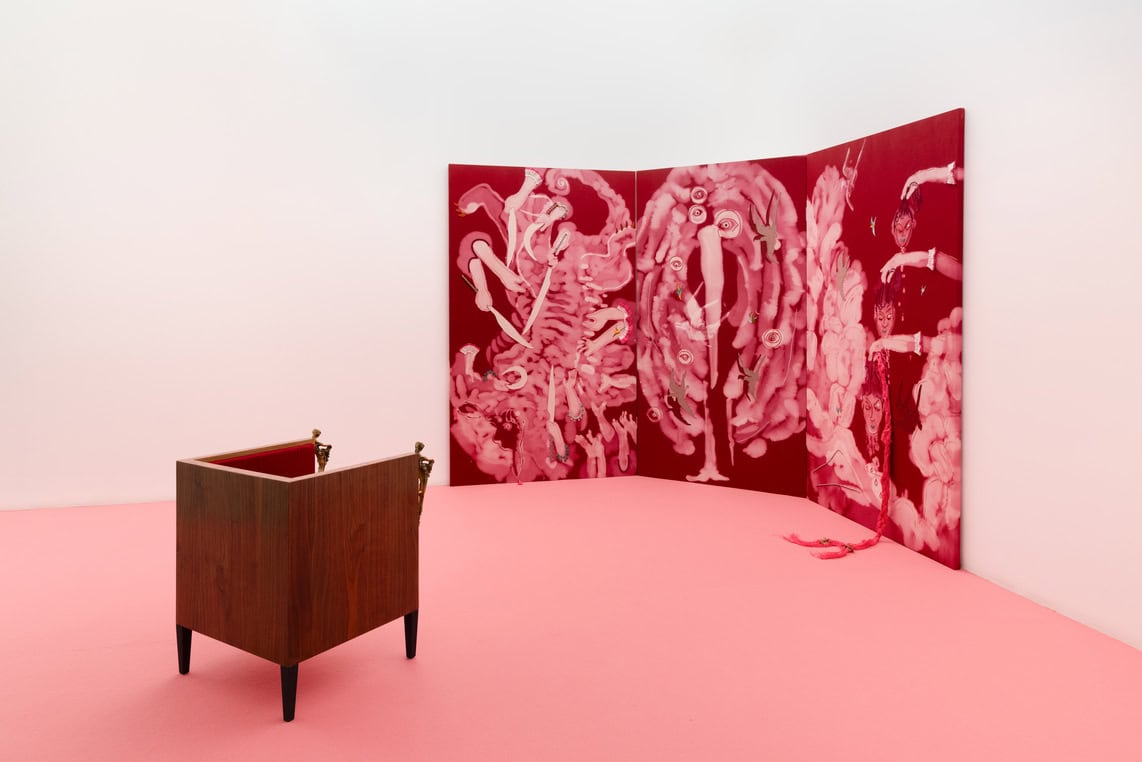article
Chantal Akerman. Travelling at MAC/CCB
The current exhibition season at MAC/CCB foregrounds influential women who built lasting legacies by breaking rules and challenging conventions. Among them are Nan Goldin, artist and activist known for centring marginalised communities and holding powerful corporations accountable for the U.S. opioid crisis; Peggy Guggenheim, whose groundbreaking choices as a gallerist included organising a exhibition of 31 women artists in early 1940s America; and Chantal Akerman, a singular voice in 20th-century experimental cinema, video installation, and writing.
Chantal Akerman: Travelling is the first major retrospective of Akerman’s work conceived by Bozar – Centre for Fine Arts (Brussels), the Chantal Akerman Foundation and CINEMATEK – the Royal Belgian Film Archive. Curated by Laurence Rassel in collaboration with Céline Brouwez (Chantal Akerman Foundation), Alberta Sessa (Bozar), and Marta Ponsa (Jeu de Paume), the exhibition was first shown at Bozar in Akerman’s hometown of Brussels and later presented in Paris, her “city of love and friendship”, by Jeu de Paume before coming to Lisbon.
The show outlines Akerman’s work chronologically and features major video installations such as Bordering on Fiction: Chantal Akerman's "D'Est" (1995), A Voice in the Desert (2002), and her last work Now (2015), as well as the artist’s archive. The exhibition at MAC/CCB follows the curatorial logic of the previous editions; however, it is arranged in a modified circular layout, replacing the initial linear sequence more fitting to the halls of Bozar. Instead of following Akerman “on the road”, the visitor remains within a rather contained space evoking an apartment or a sectioned room—environments that sustained the artist’s recurring mise-en-scènes.
Chantal Akerman: Travelling opens with a series of newly rediscovered 8mm films shot in 1967 as part of her application to the Institut National Supérieur des Arts du Spectacle (INSAS) in Brussels. These fragmentary sketches of daily life—arguably influenced by her then-recent discovery of Godard—are shown alongside Saute ma ville (Blow Up My Town) —a short film made in 1968 while Akerman was studying at INSAS. Created just before her first departure for Paris, which would mark the beginning of her nomadic existence between Paris, New York, and Brussels, the film features the artist herself as a young woman causing chaos in her kitchen, ultimately ending with its explosion. Long before Martha Rosler transformed the cooking area into a platform for critical messages in Semiotics of the Kitchen (1975), or Judy Chicago set a table for historical women in The Dinner Party (1979), Akerman’s protagonist was already reclaiming this quintessential domestic setting and a symbol of gendered social roles as a stage of her own making.
Domestic space returns as a defining setting in Akerman’s seminal masterpiece Jeanne Dielman, 23 quai du Commerce, 1080 Bruxelles (1975). The film follows Jeanne through her daily routine of cooking, cleaning, and caring for her son, alongside earning a living as a sex worker - all within the confines of a modest apartment. These activities, performed by Delphine Seyrig with elegance and controlled precision, equally fall within historically constructed gender-based expectations of feminised labour. Yet they occupy opposite ends of the spectrum of what was considered socially acceptable at the time—and arguably, little has changed in the fifty years since. The tension of this dual position finds radical release in the act that concludes the film, which is revisited in the exhibition through Akerman’s video installation Woman Sitting After Killing (2001). Displayed across seven synchronised screens, it loops the film’s final long take on Jeanne as she appears quiet, almost serene after murdering a client.
In her studies of the political dimensions of affect, feminist scholar Sara Ahmed introduces the figure of the feminist killjoy—someone who reclaims emotions and expressions of discontent as tools of resistance against dominant and oppressive norms. A killjoy finds fulfilment not in maintaining social harmony, but in disrupting prescribed normalcy. Though the term emerged in a later wave of feminist thought, the position it describes could be traced to Akerman’s characters, and arguably to the artist herself. In My Mother Laughs —a masterful and deeply candid book written while Akerman accompanied her mother through the final stages of life —the artist refers to herself as indifferent to appearances and etiquette, having dropped out of school, never settling down, marrying a man, or having children. Refusing to conform to societal expectations, she transformed her killjoy energy into cinematic language.
“I don't have a life. I never learned how to make one for myself. Here or elsewhere. But elsewhere is always better. So that leaving and leaving again and returning is all I’ve ever been able to do.” This quote from My Mother Laughs describes Akerman’s chosen nomadic lifestyle—a narrative backbone that runs through much of her work and gives the exhibition its title. From the East (1993) stands as one of her most ambitious productions: a documentary road movie filmed on her journey from the German Democratic Republic through Poland and Ukraine to Russia, driven by her lifelong inquiry into the history of her family, who came from Poland and suffered during the Holocaust. This film also provided material for her first 25-channel video installation Bordering on Fiction: Chantal Akerman's "D'Est" created for the Walker Art Center two years later and now featured as one of the highlights of the exhibition.
A person with a migrant background herself, Akerman engaged consistently with questions of displacement and borders throughout her practice—from earlier works like News From Home (1977) to later pieces such as American Stories: Food, Family and Philosophy (1989) and From the Other Side (2002), a video installation first presented at Okwui Enwezor’s documenta 11 and filmed along a migrant route from Mexico to the USA in the Arizona desert. The exhibition at MAC/CCB features A Voice in the Desert (2002)—the third part of that installation—demonstrating the final sequence of the film projected onto a screen installed in the desert, with Akerman narrating the story of a Mexican immigrant over the image of a highway stretching toward Los Angeles.
A distinctive feature of Chantal Akerman: Travelling is the extensive presentation of the artist’s archive—ephemera, scripts, behind-the-scenes photographs, film stills, and video excerpts—displayed alongside a detailed biography. Managed by the Chantal Akerman Foundation, the archive is housed at CINEMATEK (the Royal Belgian Film Archive) where Akerman served on the board for many years, and whose headquarters provided the backdrop for one of her earliest 8mm films. Through this archive, Akerman acquires yet another “home” among many—a place that continues to host her presence even in the absence of her physical body. And this home, too, has already travelled: from Brussels to Paris to Lisbon, and, one hopes, beyond.
The exhibition is on view at MAC/CCB until September 7.
ADVERTISING
Previous
interview
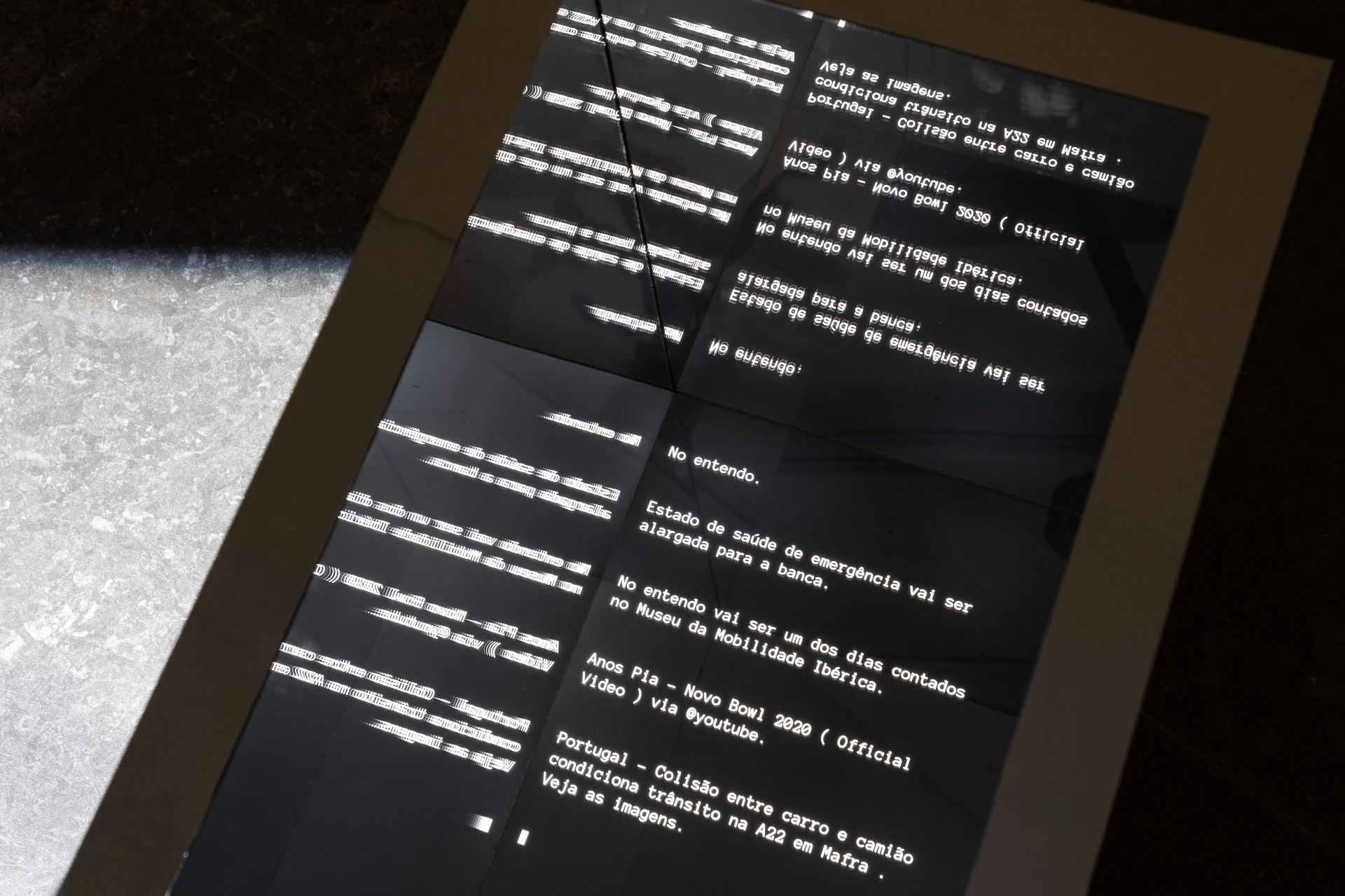
22 Jul 2025
Interview with Rudolfo Quintas, Umbigo´s cover of the month
By Mafalda Ruão
Next
article
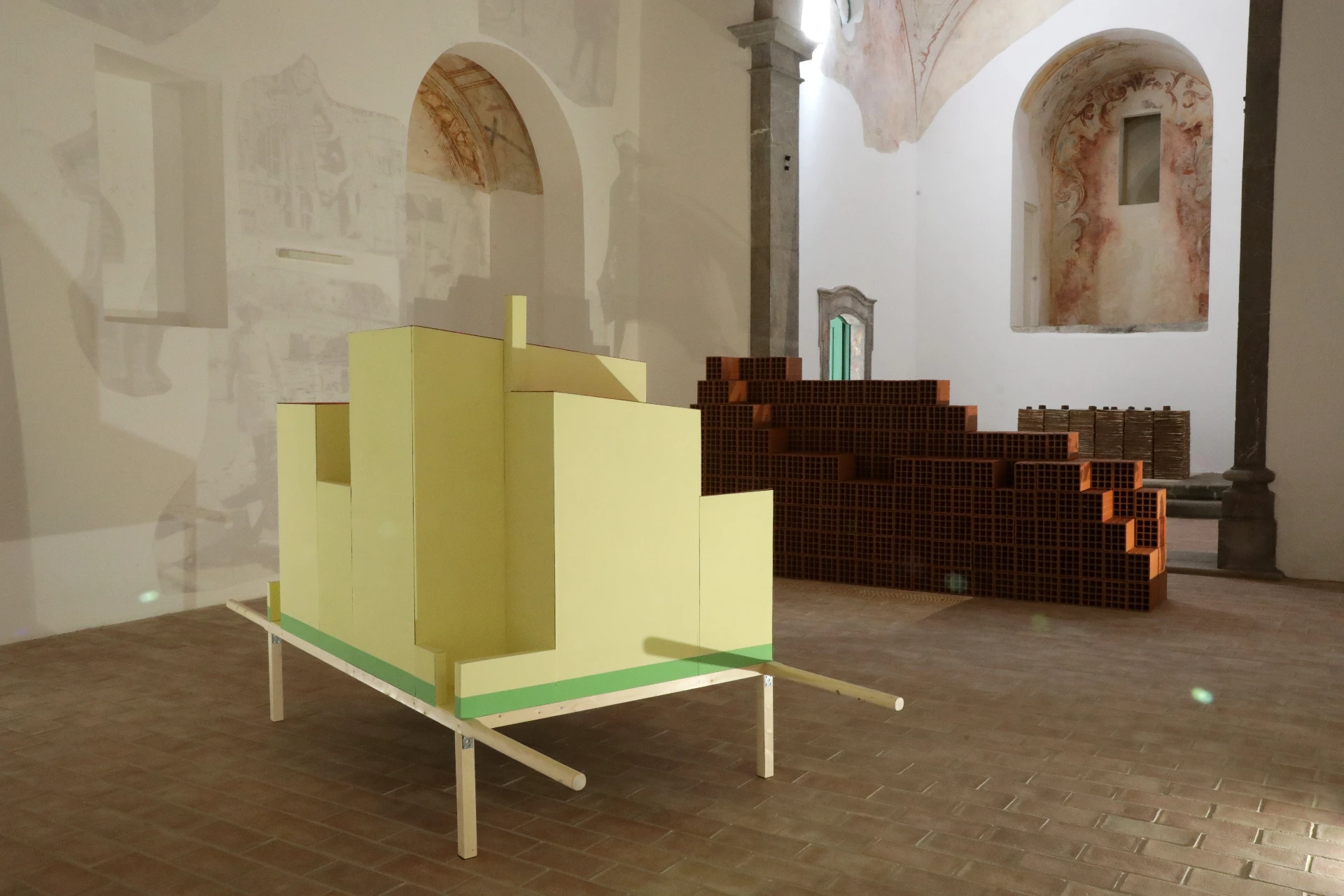
23 Jul 2025
History through Art: Serviço de Apoio Ambulatório Local, at Museu Municipal de Tavira
By Ana Isabel Soares
Related Posts
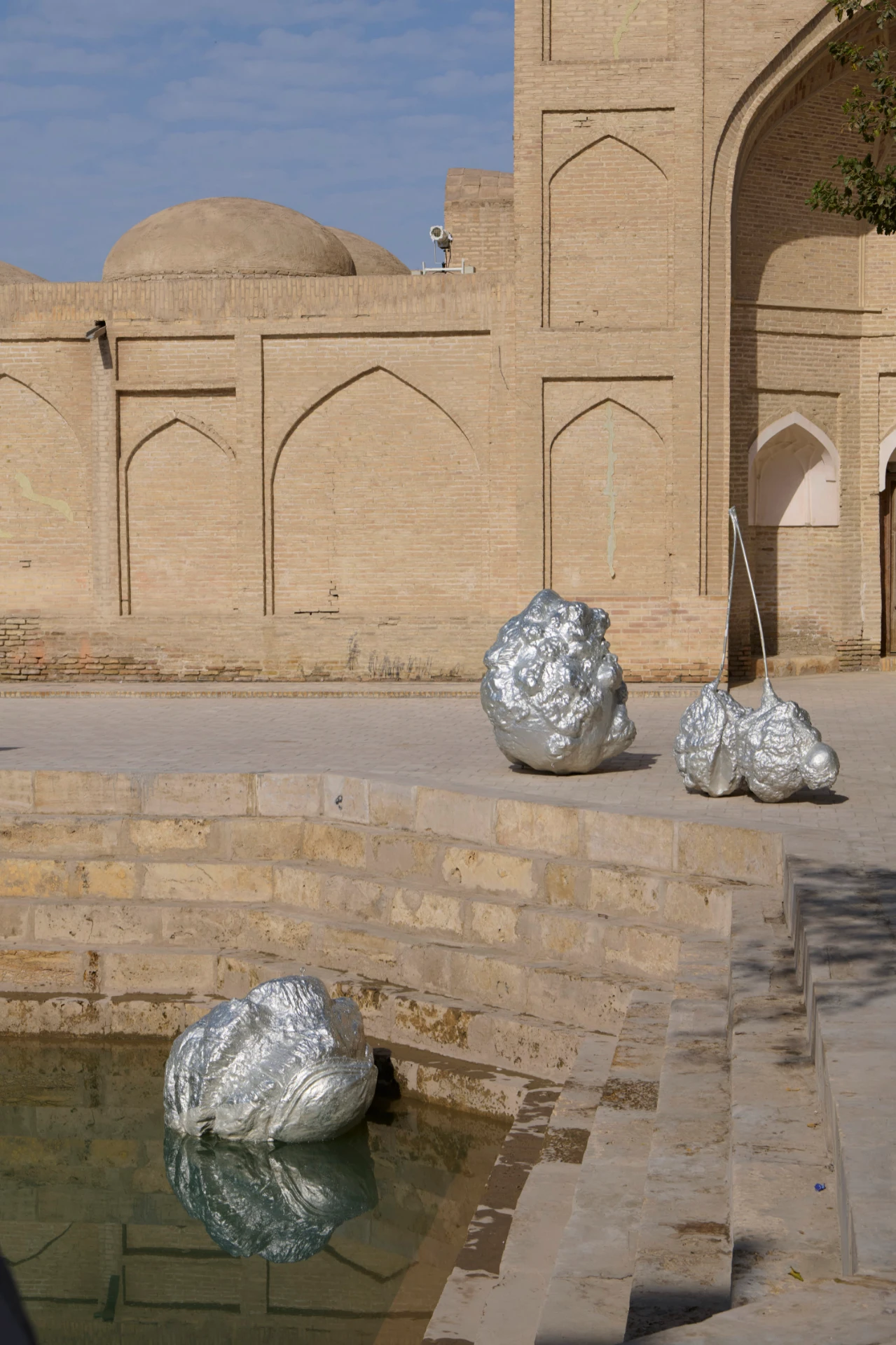
 [A] Chantal Akerman, [L] MAC-CCB-0028w.jpg)
